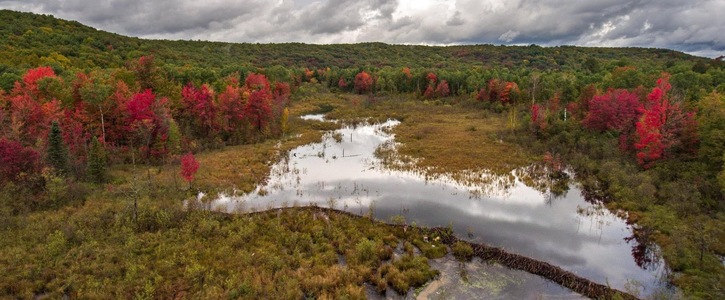2024-10-08 08:34:34 -0400
To: Chestonia Township/Star Township Board Members
NO ORV use in JORDAN RIVER VALLEY- Keep it Wild

Off-road vehicles (ORVs) and all-terrain vehicles (ATVs) can have several negative impacts on natural and scenic watershed regions, including those in northern Michigan:
- Soil Erosion and Compaction: The use of ORVs and ATVs can lead to soil erosion and compaction. This disrupts the natural soil structure, making it difficult for plants to grow and increasing the risk of erosion.
- Water Quality Degradation: These vehicles can cause sedimentation in waterways, which can degrade water quality. Increased sediment can harm aquatic habitats and reduce the clarity of the water.
- Habitat Destruction: The creation of unplanned trails and roads can fragment habitats, disrupt wildlife, and lead to the destruction of sensitive ecosystems such as wetlands and meadows34.
- Pollution: Inefficient combustion of gasoline and motor oil from these vehicles can lead to the contamination of soil and water with pollutants.
- Vegetation Damage: ORVs and ATVs can damage vegetation, especially in sensitive areas like bogs and meadows. This can take years to recover from even minimal use.
These impacts highlight the importance of managing and regulating the use of ORVs and ATVs in natural areas to protect the environment and maintain the scenic beauty of regions like northern Michigan. The next meeting is September 9, 2024 7pm at Chestonia TWP.
Why is this important?
When one thinks of a pristine, natural river, what is the first thing that comes to mind? For many in northwestern Michigan, that would be the Jordan River. From its remarkable scenic vistas in the hills of its headwaters, to the eagles and ospreys along the wide, marshy spreads of its mouth, the Jordan River fits that description perfectly. In fact, it was designated as Michigan’s first Natural River in 1972.
Paddlers on the Jordan River can enjoy an entire day floating over the river’s crystal-clear waters, surrounded by endless balsam firs, birches, and cedars. Nay a trip has ever been made without sighting elusive fish under the ripples, timid wildlife behind the brush of the banks, and majestic birds flying the river corridor.
Hikers in the Jordan River Valley can stretch their legs in the 18+ hilly miles of the Jordan River Pathway, managed by the Department of Natural Resources and North Country Trail Association. Wild leeks cover the ground as the trail winds through upland forests of white spruce, maple, beech, and ash. The trail descends fast clear streams and hillsides to go through lowlands of black spruce, balsam fir, and white cedar with black, organic soils and chirping frogs. It goes along the River, along tributaries, natural springs coming out of the hills, and along a flooding caused by beaver dams.
Although the upper sections of the Jordan River have some current and ripples in the water, the river slows and spreads out near the mouth. This area, called the Jordan River Spreads, contains hundreds of acres of marshes and wetlands; basically a freshwater estuary. Herons, egrets, and other waterbirds wade through the rushes, sedges, and cattails of the expansive emergent marshes. The City of East Jordan is located just outside of the Spreads.
Paddlers on the Jordan River can enjoy an entire day floating over the river’s crystal-clear waters, surrounded by endless balsam firs, birches, and cedars. Nay a trip has ever been made without sighting elusive fish under the ripples, timid wildlife behind the brush of the banks, and majestic birds flying the river corridor.
Hikers in the Jordan River Valley can stretch their legs in the 18+ hilly miles of the Jordan River Pathway, managed by the Department of Natural Resources and North Country Trail Association. Wild leeks cover the ground as the trail winds through upland forests of white spruce, maple, beech, and ash. The trail descends fast clear streams and hillsides to go through lowlands of black spruce, balsam fir, and white cedar with black, organic soils and chirping frogs. It goes along the River, along tributaries, natural springs coming out of the hills, and along a flooding caused by beaver dams.
Although the upper sections of the Jordan River have some current and ripples in the water, the river slows and spreads out near the mouth. This area, called the Jordan River Spreads, contains hundreds of acres of marshes and wetlands; basically a freshwater estuary. Herons, egrets, and other waterbirds wade through the rushes, sedges, and cattails of the expansive emergent marshes. The City of East Jordan is located just outside of the Spreads.
How it will be delivered
Letter to Board of Star and Chestonia Townships.
